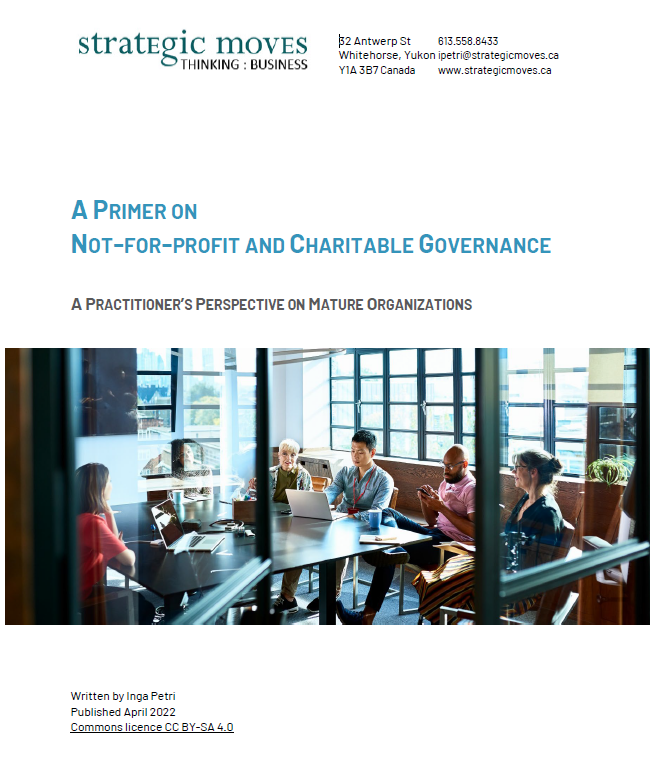This primer has come about from a series of projects I have worked on in the last few years for clients in the arts, as well as board of directors outside the arts.
In early-stage societies, the board is often a working board, developing and providing services and programs directly to its membership, without any paid stuff and often relying on the deep involvement of the broader membership.
As organizations grow and mature and their scope increases, they tend to require increased capacity to deliver on their mandate. Capacity comes in two ways predominantly: money and people. As revenue streams are developed, and budgets increase, boards can hire their first paid staff person. The board begins to delegate some of their responsibilities to this person. As the staff complement grows, the board tends to move to being a management board that complements staff activities, and, eventually, to a “hands-off, nose-in” governance board concerned with strategy and policies that govern the organizations.

At each stage, the governing documents should be reviewed and updated to ensure they meet the needs to an evolving organization. As an employer, policies and procedures must be developed and updated to satisfy a wide range of legal obligations emanating from the Employment Law and Labour Standards, Tax legislation, Human Rights legislation, Occupational Health and Safety and any other relevant provincial and federal laws. Any delegation of day-to-day financial management should be explicitly defined to ensure the board’s fiduciary obligations and oversight are fully met. Evolving social obligations to serve a diverse membership and the community at large as well as practical considerations to provide standardized, reliable services and programs require a set of clear policies and procedures.
Up-to-date, transparent delineation of lines of authority, responsibility and accountability are crucial, in order to avoid legacy behaviours from an earlier stage of organizational development – such as maintaining the committee structure of a hands-on working board while having evolved to a governance board – and to avoid misunderstandings and misinterpretations that become detrimental to the health and vitality of the society.

This graphic shows the basic organizational dynamic: the delegation of powers (authority and responsibility) moving clockwise from the membership toward front-line staff, while accountabilities and reporting are moving in the opposite direction from staff back to the membership of the organization.
As staff delivers programs and services directly to members, their relationship with membership can and should be trusted and respectful. Notwithstanding that closeness, accountability from staff never goes directly to the membership or the board; staff members’ authorities and responsibilities are delegated through the executive director. Therefore, staff is accountable and reports to the executive director who in turn is accountable and reports to the board who in turn is accountable and reports to the membership.
